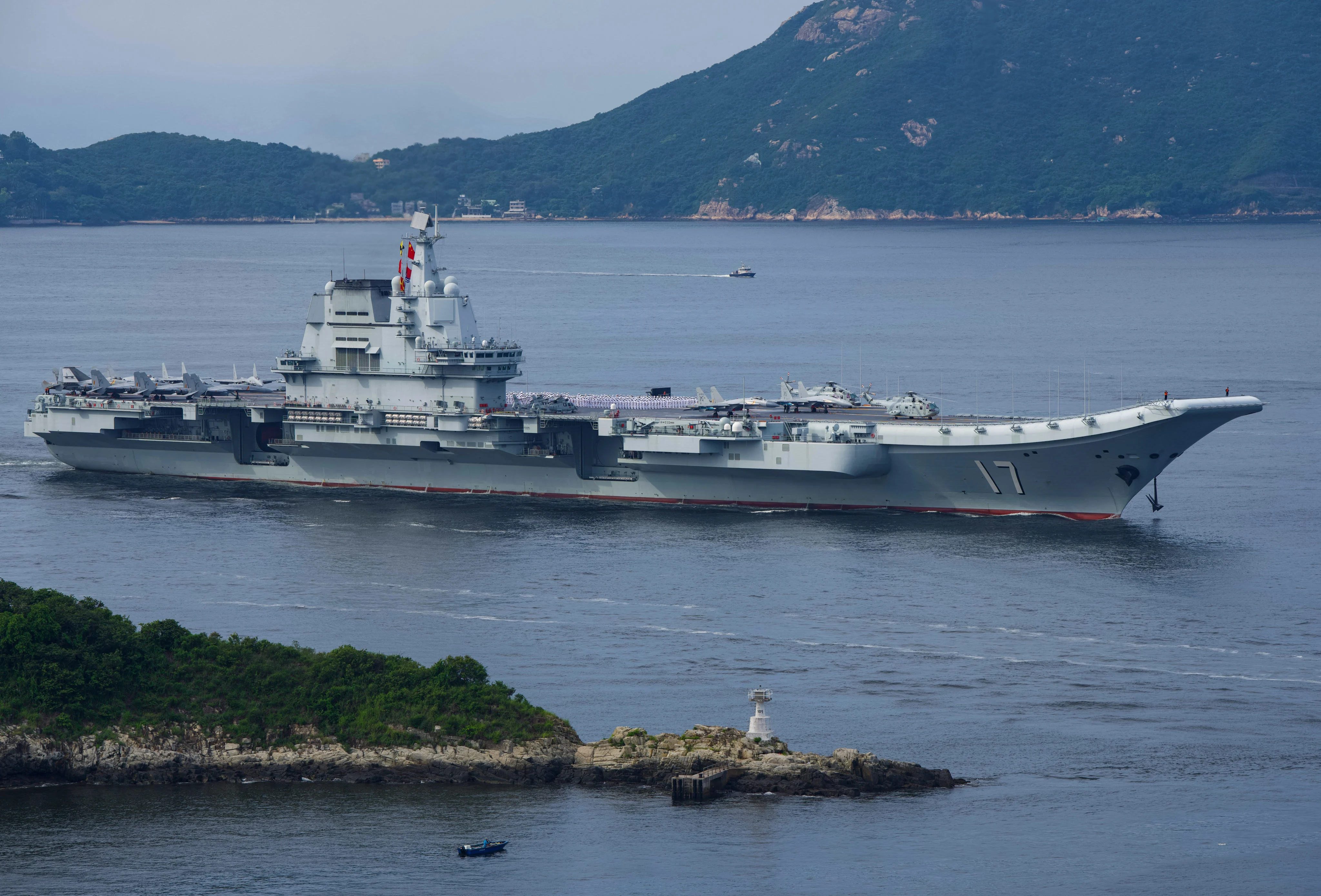By Seong Hyeon Choi
Almost a decade has passed since the People’s Liberation Army pulled the trigger on President Xi Jinping’s plans for a massive overhaul of the world’s biggest military. In the latest of a series on Chinese weapon systems, Seong Hyeon Choi looks at what China’s second aircraft carrier tells us about the PLA Navy’s blue water ambitions.
The Shandong – which arrived in Hong Kong on Thursday for its inaugural five-day port call to the city – is the PLA Navy’s second aircraft carrier and its first to be built in China.
The carrier is escorted by the missile destroyers Yanan and Zhanjiang, along with the missile frigate Yuncheng, and will host a series of tours and cultural exchanges during its visit.
The Shandong’s homeport is in Hainan, southern China, where the carrier is in service with the navy’s Southern Theatre Command, which mainly operates near the South China Sea.
With a full-load displacement of 70,000 tonnes, the Shandong has become an instrument of Beijing’s long-range naval power projection across the island chains that have for decades marked the defensive boundaries of the United States and its allies in the Western Pacific.
The Shandong, commissioned in December 2019 and officially designated Type 002, kick-started China’s dual-carrier era. Its fellow carrier, the Liaoning, was reconstructed from a Soviet Kuznetsov-class vessel and delivered to the PLA Navy in 2012.
Because its design was derived from the Soviet-era vessel, the Shandong shares some characteristics with the Liaoning, including their conventional ski-jump ramps to launch aircraft.
They also have a similar length and beam of around 305 metres (1,000 feet) and 75 metres (246 feet), respectively. However, the Shandong has a heavier full-load displacement than the Liaoning’s 60,900 tonnes and a slightly slower speed at 31 knots, compared to 32 knots.
The Shandong has an expanded hangar and sponson, allowing it to host around 36 aircraft, including J-15 fighter jets, Z-18 transport helicopters and Z-9 medium multipurpose utility helicopters.
Similar armaments to the Liaoning have also been integrated into the Shandong, which is equipped with three Type 1130 close-in weapon systems and three HQ-10 short-range surface-to-air missiles.
Blue-water operations
The Shandong was first seen in the South China Sea – the waterway subject to multiple competing claims by other Southeast Asian nations, including the Philippines, Vietnam, Malaysia and Brunei – during its nine sea trials over 19 months.
Since then, the carrier has mainly operated near the mainland coast, but lately has been more frequently seen further from home – in the blue waters of the Philippine Sea or the Western Pacific Ocean, which includes the strategically critical eastern side of Taiwan.
Beijing regards Taiwan as part of its territory and has not ruled out using force to bring it under mainland control. Like most countries, the US does not recognise Taiwan as independent but is its biggest arms supplier and opposes any attack.
In April, the Shandong and its strike group took part in Strait Thunder 2025A – the PLA’s multi-service military exercise near the Taiwan Strait, a massive drill that included joint manoeuvres with naval and aerial units east of the island.
The purpose of the exercise was said to be to assess the military’s ability to “integrate inner and outer perimeter forces in a multi-axis blockade scenario”.
Such missions show Beijing’s intention to advance beyond the first island chain – a series of islands and archipelagos from Japan’s Kyushu Island down to the South China Sea and controlled by US allies – and building its blue-water capabilities.
Later that month, the Shandong and its escorts made two rare transits towards the Western Pacific within a week.
The first transit was reported by the Japanese Defence Ministry, which said it was spotted sailing about 789km (490 miles) south of Japan’s Miyako Island in the Philippine Sea. Over two days, the carrier’s aircraft conducted roughly 130 take-off and landing drills.
Next, the Shandong was seen near US-Philippine joint exercises that were taking place around the north of Luzon Island.
The carrier was accompanied by six destroyers and frigates, as well as two support vessels, and was crossing a part of the Bashi Channel that could be a major choke point in any conflict in the Taiwan Strait.
In June, both the Shandong and the Liaoning crossed the second island chain – stretching from Japan through Guam to Papua New Guinea – for manoeuvres that marked the first and furthest records for two Chinese aircraft carriers operating in the Western Pacific.
Bridge to the future
While the Shandong represents a steady evolution in scale and complexity, it still relies on the ski-jump launch system that takes up space with ramps that could be used to carry more aircraft.
China’s next aircraft carrier, the Type 003 Fujian – launched in June 2022 and undergoing sea trials – features three electromagnetic catapults, allowing more room for planes, fuel and munitions.
The cutting-edge technology enables planes to achieve a more uniform acceleration rate compared with conventional steam catapult systems, increasing safety and reducing maintenance costs.
The Fujian’s electromagnetic catapults also allow for more efficient and diverse aircraft launches and are expected to significantly increase operational flexibility and sortie rates.
According to media reports in November, satellite data suggests that Beijing is developing nuclear-powered propulsion for its next aircraft carrier, which could significantly improve Chinese naval endurance in blue waters.
The PLA plans to have six carriers by 2035, a fleet that would make it the world’s second-biggest blue-water navy after the United States.
The Shandong stands as a critical bridge – from coastal experiment to fleet-level integration. It also establishes China’s capacity for domestic production of aircraft carriers and sustained carrier group operations beyond its littorals.
Its recent activities in the blue water area of the Western Pacific suggest that the Shandong is a stepping stone for China’s future carrier operations with more advanced propulsion and operational capabilities as it attempts to match US carrier strike groups.
